First time-lapse images of exploding fireball from a 'nova' star
Astronomers have captured images of a thermonuclear fireball exploding from a star.
Oct 27th, 2014
Read more
 Subscribe to our Space Exploration News feed
Subscribe to our Space Exploration News feed
Astronomers have captured images of a thermonuclear fireball exploding from a star.
Oct 27th, 2014
Read moreThermodiffusion, also called the Soret effect, is a mechanism by which an imposed temperature difference establishes a concentration difference within a mixture. Two recent studies provide a better understanding of such effects. They build on recent experimental results from the Influence Vibration on Diffusion in Liquids research project performed on the International Space Station under microgravity to avoid motion in the liquids.
Oct 27th, 2014
Read moreNASA is seeking proposals to develop and manufacture ultra-lightweight materials for aerospace vehicles and structures of the future. Proposals will demonstrate lower-mass alternatives to honeycomb or foam cores currently used in composite sandwich structures.
Oct 27th, 2014
Read more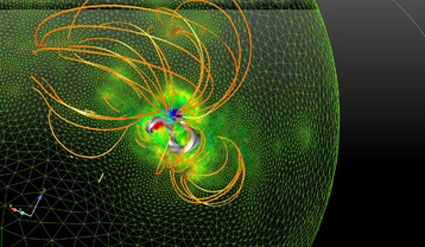 Scientists have identified a key phenomenon in the triggering of solar flares. Using satellite data and models, the scientists were able to monitor the evolution of the solar magnetic field in a region with eruptive behavior.
Scientists have identified a key phenomenon in the triggering of solar flares. Using satellite data and models, the scientists were able to monitor the evolution of the solar magnetic field in a region with eruptive behavior.
Oct 23rd, 2014
Read moreARQUIMEA will be testing technology it has developed in the International Space Station. The technology is based on intelligent materials that allow objects to be sent into orbit without the use of explosives.
Oct 23rd, 2014
Read more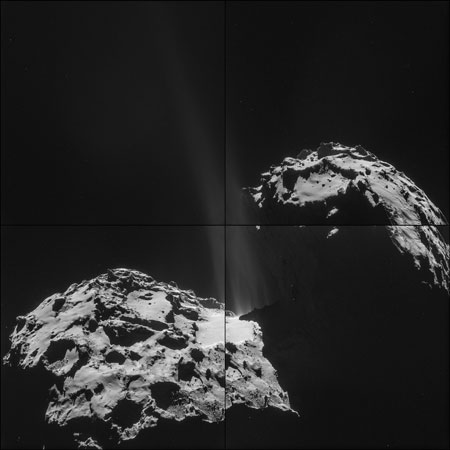 How does a comet smell? Since early August the Rosetta Orbiter Sensor for Ion and Neutral Analysis (ROSINA) is sniffing the fumes of the comet Churyumov-Gerasimenko with its two mass spectrometers. The detected chemistry in the coma of the comet is surprisingly rich already at more than 400 million kilometres from the Sun.
How does a comet smell? Since early August the Rosetta Orbiter Sensor for Ion and Neutral Analysis (ROSINA) is sniffing the fumes of the comet Churyumov-Gerasimenko with its two mass spectrometers. The detected chemistry in the coma of the comet is surprisingly rich already at more than 400 million kilometres from the Sun.
Oct 23rd, 2014
Read more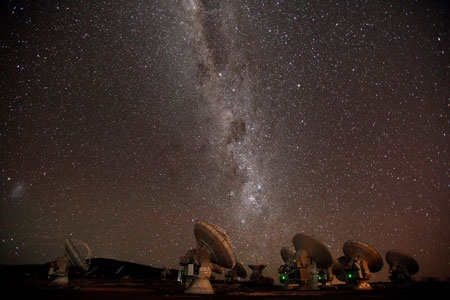 Scientists see good times approaching for astrophysicists after hatching a new observational strategy to distill detailed information from galaxies at the edge of the Universe. Using two world-class supercomputers, the researchers were able to demonstrate the effectiveness of their approach by simulating the formation of a massive galaxy at the dawn of cosmic time.
Scientists see good times approaching for astrophysicists after hatching a new observational strategy to distill detailed information from galaxies at the edge of the Universe. Using two world-class supercomputers, the researchers were able to demonstrate the effectiveness of their approach by simulating the formation of a massive galaxy at the dawn of cosmic time.
Oct 22nd, 2014
Read more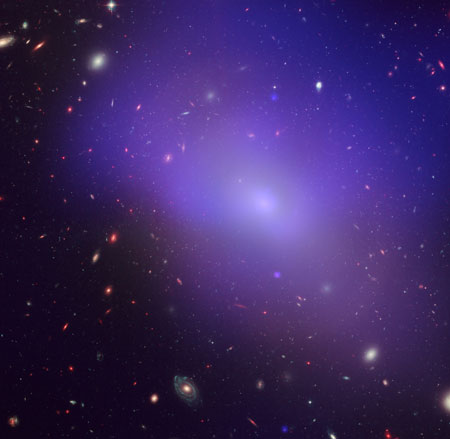 Massive black holes spewing out radio-frequency-emitting particles at near-light speed can block formation of new stars in aging galaxies, a study has found.
Massive black holes spewing out radio-frequency-emitting particles at near-light speed can block formation of new stars in aging galaxies, a study has found.
Oct 22nd, 2014
Read more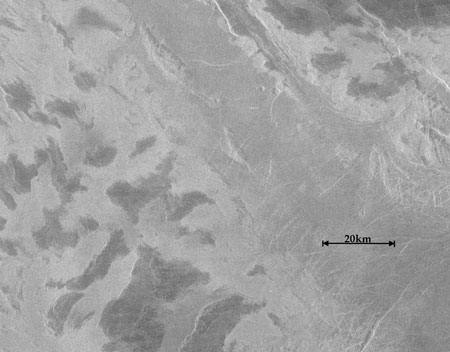 Venus is hiding something beneath its brilliant shroud of clouds: a first order mystery about the planet that researchers may be a little closer to solving because of a new re-analysis of twenty-year-old spacecraft data.
Venus is hiding something beneath its brilliant shroud of clouds: a first order mystery about the planet that researchers may be a little closer to solving because of a new re-analysis of twenty-year-old spacecraft data.
Oct 20th, 2014
Read more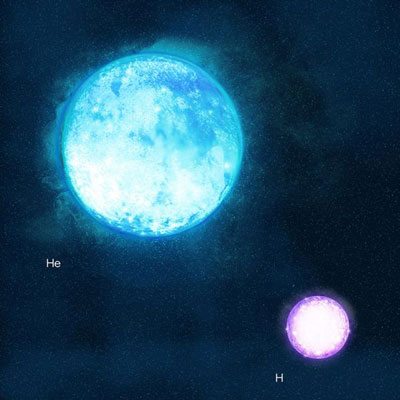 A new model provides the first characterization of the progenitor for a hydrogen-deficient supernova. The model predicts that a bright hot star, which is the binary companion to an exploding object, remains after the explosion.The findings have important implications for the evolution of massive stars.
A new model provides the first characterization of the progenitor for a hydrogen-deficient supernova. The model predicts that a bright hot star, which is the binary companion to an exploding object, remains after the explosion.The findings have important implications for the evolution of massive stars.
Oct 17th, 2014
Read more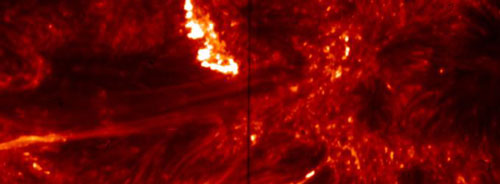 Why is the Sun's million-degree corona, or outermost atmosphere, so much hotter than the Sun's surface? This question has baffled astronomers for decades. Researchers have now found that miniature solar flares called 'nanoflares' - and the speedy electrons they produce - might partly be the source of that heat, at least in some of the hottest parts of the Sun's corona.
Why is the Sun's million-degree corona, or outermost atmosphere, so much hotter than the Sun's surface? This question has baffled astronomers for decades. Researchers have now found that miniature solar flares called 'nanoflares' - and the speedy electrons they produce - might partly be the source of that heat, at least in some of the hottest parts of the Sun's corona.
Oct 16th, 2014
Read more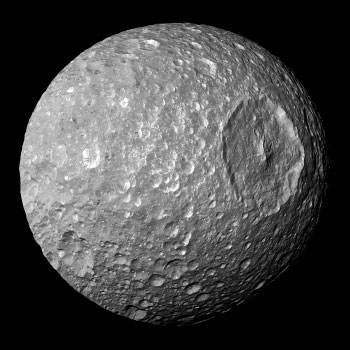 Using instruments aboard the Cassini spacecraft to measure the wobbles of Mimas, the closest of Saturn's regular moons, an astronomer has inferred that this small moon's icy surface cloaks either a rugby ball-shaped rocky core or a sloshing sub-surface ocean.
Using instruments aboard the Cassini spacecraft to measure the wobbles of Mimas, the closest of Saturn's regular moons, an astronomer has inferred that this small moon's icy surface cloaks either a rugby ball-shaped rocky core or a sloshing sub-surface ocean.
Oct 16th, 2014
Read more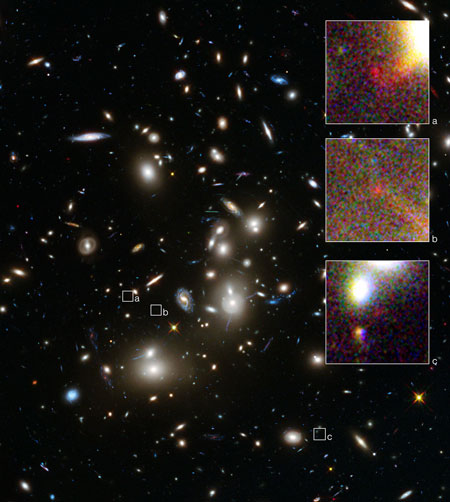 Using the NASA/ESA Hubble Space Telescope astronomers have made what may be the most reliable distance measurement yet of an object that existed in the Universe's formative years. The galaxy is one of the faintest, smallest and most distant galaxies ever seen and measuring its distance with this accuracy was possible due only to the incredibly detailed mapping of how giant galaxy clusters warp the space-time around them.
Using the NASA/ESA Hubble Space Telescope astronomers have made what may be the most reliable distance measurement yet of an object that existed in the Universe's formative years. The galaxy is one of the faintest, smallest and most distant galaxies ever seen and measuring its distance with this accuracy was possible due only to the incredibly detailed mapping of how giant galaxy clusters warp the space-time around them.
Oct 16th, 2014
Read more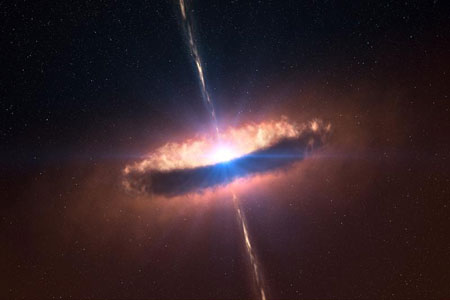 Astrophysical jets are counted among our Universe's most spectacular phenomena: From the centers of black holes, quasars, or protostars, these rays of matter sometimes protrude several light years into space. Now, for the first time ever, an international team of researchers has successfully tested a new model that explains how magnetic fields form these emissions in young stars.
Astrophysical jets are counted among our Universe's most spectacular phenomena: From the centers of black holes, quasars, or protostars, these rays of matter sometimes protrude several light years into space. Now, for the first time ever, an international team of researchers has successfully tested a new model that explains how magnetic fields form these emissions in young stars.
Oct 16th, 2014
Read more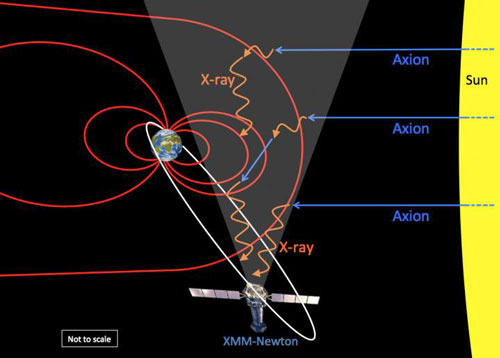 Space scientists have detected a curious signal in the X-ray sky - one that provides a tantalising insight into the nature of mysterious Dark Matter.
Space scientists have detected a curious signal in the X-ray sky - one that provides a tantalising insight into the nature of mysterious Dark Matter.
Oct 16th, 2014
Read more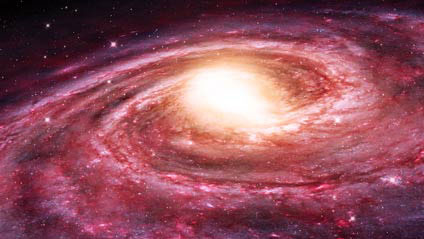 Astronomers have discovered that our nearest galactic neighbors, the dwarf spheroidal galaxies, are devoid of star-forming gas, and that our Milky Way Galaxy is to blame.
Astronomers have discovered that our nearest galactic neighbors, the dwarf spheroidal galaxies, are devoid of star-forming gas, and that our Milky Way Galaxy is to blame.
Oct 15th, 2014
Read moreOur view of other solar systems just got a little more familiar, with the discovery of a planet 25,000 light-years away that resembles our own Uranus.
Oct 15th, 2014
Read more Astronomers have used the APEX telescope to probe a huge galaxy cluster that is forming in the early Universe and revealed that much of the star formation taking place is not only hidden by dust, but also occurring in unexpected places. This is the first time that a full census of the star formation in such an object has been possible.
Astronomers have used the APEX telescope to probe a huge galaxy cluster that is forming in the early Universe and revealed that much of the star formation taking place is not only hidden by dust, but also occurring in unexpected places. This is the first time that a full census of the star formation in such an object has been possible.
Oct 15th, 2014
Read more